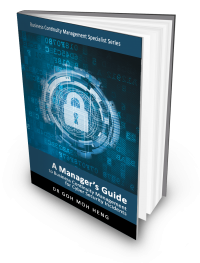Continuous Improvement: Difference between revisions
No edit summary |
(No difference)
|
Latest revision as of 15:59, 13 July 2024
| 1. Continuous Improvement in the context of operational resilience refers to an ongoing and systematic effort to enhance the organisation's ability to prevent, respond to, and recover from disruptions and incidents.
Notes (1): It involves identifying areas for improvement, implementing corrective actions, and incorporating lessons learned from past events to strengthen the organisation's resilience capabilities.
|

2. Continuous Improvement refers to monitoring information systems at discrete intervals to identify potential cyber security attacks and verify the effectiveness of protective controls.

3. Continuous improvement refers to regularly evaluating and re-examining its information security policies and related regulations and management systems.
Source: (Simplex Inc., 2017)
4. Continuous improvement refers to flexibly conducting periodic reviews concerning information security.
Source: (Frontier Management Inc., 2013)
